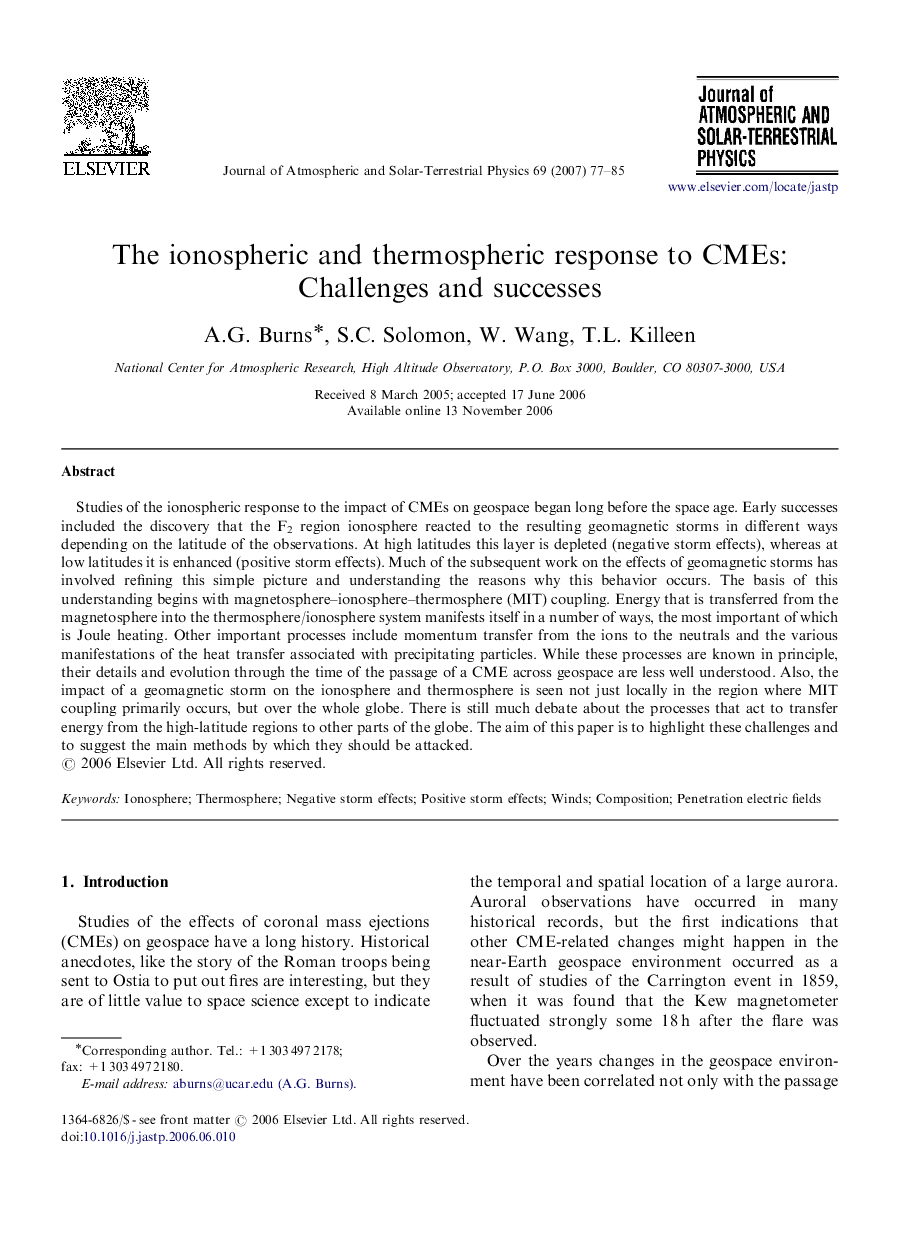| Article ID | Journal | Published Year | Pages | File Type |
|---|---|---|---|---|
| 1778212 | Journal of Atmospheric and Solar-Terrestrial Physics | 2007 | 9 Pages |
Studies of the ionospheric response to the impact of CMEs on geospace began long before the space age. Early successes included the discovery that the F2 region ionosphere reacted to the resulting geomagnetic storms in different ways depending on the latitude of the observations. At high latitudes this layer is depleted (negative storm effects), whereas at low latitudes it is enhanced (positive storm effects). Much of the subsequent work on the effects of geomagnetic storms has involved refining this simple picture and understanding the reasons why this behavior occurs. The basis of this understanding begins with magnetosphere–ionosphere–thermosphere (MIT) coupling. Energy that is transferred from the magnetosphere into the thermosphere/ionosphere system manifests itself in a number of ways, the most important of which is Joule heating. Other important processes include momentum transfer from the ions to the neutrals and the various manifestations of the heat transfer associated with precipitating particles. While these processes are known in principle, their details and evolution through the time of the passage of a CME across geospace are less well understood. Also, the impact of a geomagnetic storm on the ionosphere and thermosphere is seen not just locally in the region where MIT coupling primarily occurs, but over the whole globe. There is still much debate about the processes that act to transfer energy from the high-latitude regions to other parts of the globe. The aim of this paper is to highlight these challenges and to suggest the main methods by which they should be attacked.
